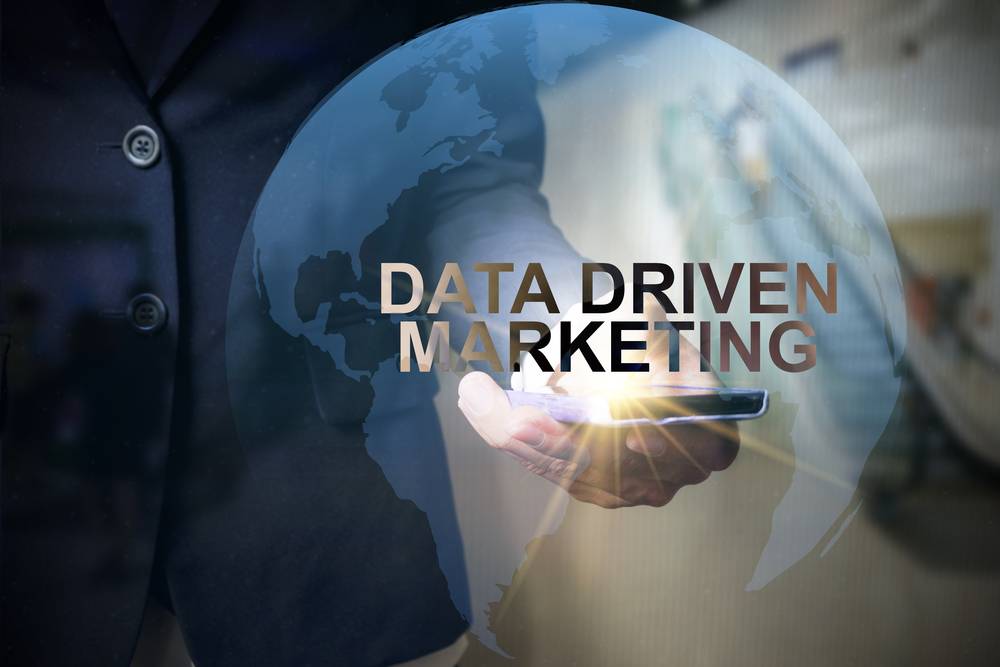In today’s fast-paced digital landscape, businesses are inundated with data from various sources. This wealth of information presents a unique opportunity to understand customer behaviors, preferences, and trends. Data-driven marketing leverages this data to make informed decisions, optimize strategies, and ultimately drive business growth. In this blog, we’ll explore the power of data-driven marketing, its benefits, and how to implement it effectively in your organization.

Table of Contents
Toggle1. Understanding Data-Driven Marketing
Data-driven marketing refers to the practice of using data analytics to guide marketing strategies and decisions. This approach enables businesses to understand their target audience better, tailor their messaging, and measure the effectiveness of their campaigns. By relying on data, marketers can move away from intuition-based decisions and instead make choices grounded in empirical evidence.
2. Benefits of Data-Driven Marketing
Implementing data-driven marketing offers numerous advantages:
- Enhanced Customer Insights: By analyzing customer data, businesses can gain deeper insights into their target audience’s behaviors, preferences, and pain points. This understanding allows for more personalized marketing strategies that resonate with customers.
- Improved Targeting: Data-driven marketing enables precise targeting of specific customer segments. By segmenting audiences based on demographics, interests, and behaviors, businesses can deliver tailored messages that increase engagement and conversion rates.
- Increased ROI: Marketing strategies rooted in data tend to be more effective, resulting in higher returns on investment. By optimizing campaigns based on performance metrics, businesses can allocate resources more efficiently and maximize profitability.
- Better Decision-Making: Data provides a solid foundation for decision-making. Marketers can evaluate past campaign performances, identify successful strategies, and refine their approach based on real-time insights.
- Predictive Analytics: With advanced analytics, businesses can anticipate future customer behaviors and trends. Predictive models help marketers understand what products or services customers are likely to be interested in, allowing for proactive strategies.
3. Key Components of Data-Driven Marketing
To harness the power of data-driven marketing, businesses need to focus on several key components:
- Data Collection: Gather data from various sources, including website analytics, social media interactions, customer surveys, and CRM systems. This comprehensive data collection is crucial for building a complete picture of customer behavior.
- Data Analysis: Use analytical tools to process and interpret the data collected. Employ techniques such as segmentation, cohort analysis, and A/B testing to uncover trends and insights.
- Actionable Insights: Transform data into actionable insights that can inform marketing strategies. Identify key takeaways that will help you optimize campaigns and enhance customer engagement.
- Implementation: Implement changes based on the insights gained. This could involve adjusting your messaging, refining your target audience, or optimizing your marketing channels.
- Continuous Monitoring: Monitor the performance of your marketing efforts regularly. Use analytics to track key performance indicators (KPIs) and make adjustments as needed to improve results continually.
4. Tools for Data-Driven Marketing
Numerous tools can help businesses implement data-driven marketing strategies effectively:
- Analytics Platforms: Tools like Google Analytics, Adobe Analytics, and Mixpanel allow businesses to track website traffic, user behavior, and conversion rates.
- Customer Relationship Management (CRM) Systems: CRMs like Salesforce and HubSpot help collect and manage customer data, providing insights into customer interactions and preferences.
- Email Marketing Software: Platforms like Mailchimp and Klaviyo enable businesses to segment their audience and analyze email campaign performance.
- Social Media Analytics: Tools like Hootsuite, Sprout Social, and Buffer provide insights into social media engagement and audience demographics.
5. Case Studies: Success Through Data-Driven Marketing
Several businesses have successfully leveraged data-driven marketing to achieve remarkable results:
- Netflix: By analyzing viewing data, Netflix can recommend content tailored to individual preferences, leading to higher user engagement and retention rates.
- Amazon: Amazon uses customer purchase history and browsing behavior to suggest products, resulting in increased sales through personalized recommendations.
- Coca-Cola: The company uses social media analytics to understand customer sentiment and tailor its marketing campaigns accordingly, enhancing brand loyalty and engagement.
6. Challenges in Data-Driven Marketing
While the benefits are significant, businesses may encounter challenges when implementing data-driven marketing:
- Data Privacy Concerns: With increasing regulations surrounding data privacy, businesses must ensure they handle customer data responsibly and transparently.
- Data Overload: The sheer volume of data can be overwhelming. It’s essential to focus on relevant metrics and avoid getting lost in unnecessary information.
- Integration Issues: Integrating data from multiple sources can be complex. Businesses need to establish a cohesive system to ensure seamless data flow and analysis.
Conclusion
Data-driven marketing is not just a trend; it’s a fundamental shift in how businesses approach marketing strategies. By leveraging data to understand customer behavior and preferences, companies can create more targeted and effective marketing campaigns. The power of data lies in its ability to inform decisions, optimize strategies, and ultimately drive growth. As businesses continue to navigate the digital landscape, adopting a data-driven approach will be essential for staying competitive and meeting customer expectations. Embracing data-driven marketing today can set the stage for success in the future.


No responses yet